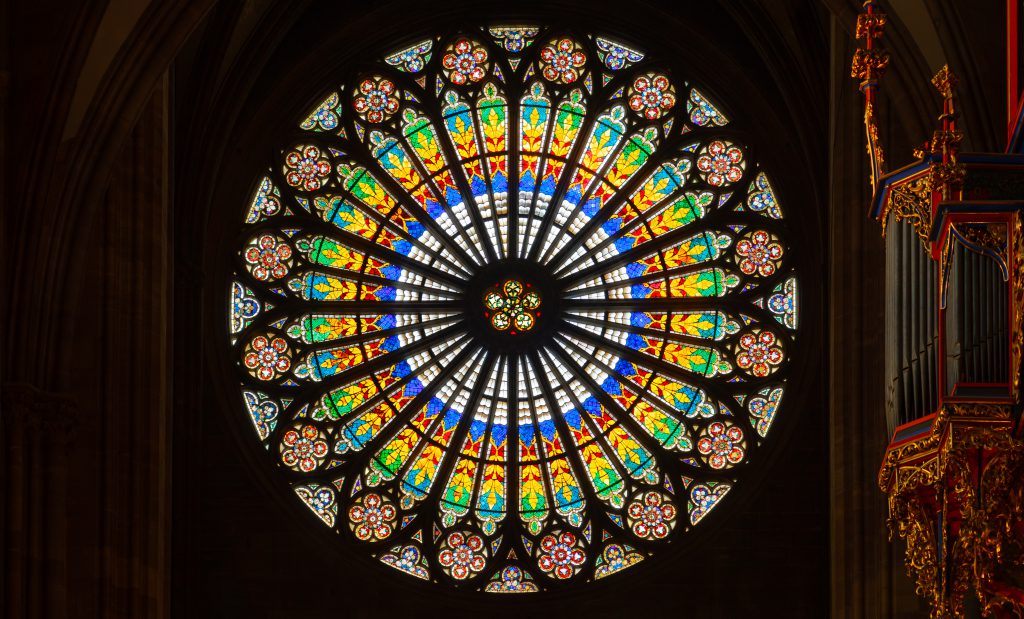
Painton Cowan, The Rose Window, Thames and Hudson, London, 1979.
During the 12th century, France experienced a cultural renaissance. Around 1150, rose windows began to appear in the new gothic cathedrals of the Ile de France around 1150. Creation of the great gothic cathedrals reached its height during the centuries of expanding religious and intellectual freedom that, by the middle 1200’s, were rapidly coming to an end. Rose windows, Cowan writes, transformed the cathedral into an actual “living vessel of the soul”, an embodiment of the “temple within” in which the human and divine can could merge into one.
They can still have a profound impact on those willing to put aside their ordinary thoughts and instead absorb all that can be conveyed by these astonishing creations from a vanished time.Rose windows are mandalas, affirmations of the unity and order of the universe beneath the apparent chaos of the material world, of the divine unfoldment within the appearances of things. The rose was a symbol of God’s love and perfection. To Christian mystics, the rose symbolized of the soul of Christ. To alchemists, it was “the flower of those who have wisdom, of the perfected soul, and the soul striving toward perfection.”
According to Cowan, gothic rose windows represented “the total infusion of matter with spirit.” The northern rose at Chartres, above the Portal of the Initiates, Cowan explains, was based on three superimposed geometries. The first is the Fibonacci series, the mathematical progression that governs natural life; the second is a pattern of equilateral triangles; and the third is an integration of the first two. All of the great roses at Chartres, Cowan tells us, “are divided into twelve segments, the number of perfection of the universe and of the Logos.” During the Middle Ages, numbers were perceived as possessing profound metaphysical significance and mysterious powers. The art and architecture of Islam also represented God and the activity of the divine through geometric forms.
Sculptor Auguste Rodin’s declared that, “If we could but understand Gothic art, we should be irresistibly led back to the truth” and described the great gothic cathedrals as “living shrines.” For Rodin, they were “the Sphinx, guardian of the Secret.” The remarkable skills developed in the stained glass workshops at Chartres, came from Venice and Bohemia which themselves inherited such knowledge from even further to the east. The stained glass produced at Chartres was astonishing in the strength and purity of its colors, which led to speculation that alchemy and alchemists may have been involved in its creation.
Such beliefs, in Cowan’s view, may have truth in them. The secrets of stained glass production at Chartres were closely guarded. Gold, for example, was used to help produce the deep ruby red for which Chartres is famous. Some panes of ruby red glass at Chartres are comprised of up to forty separate paper thin layers of colored glass, fired and fused together one at a time. No one, Cowan notes, has, since then, been able to produce stained glass that equals it and the secrets of its manufacture appear to have been mysteriously lost or abandoned.
Next: The Golden Age of Chartres: The Teachings of a Mystery School